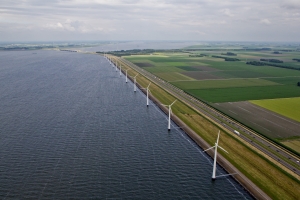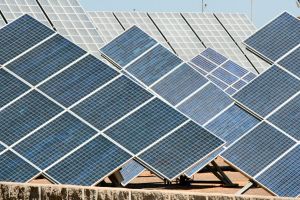It is no secret that becoming energy independent is a major goal of countries around the world. It’s been one of the driving topics of this 2012 election and it will be increasingly important to all of us in the future as the world figures out how to continue supplying power for a multitude of things with an ever growing world population. It’s essentially a race against time to determine whether we can figure out how to make water, wind, solar and other energy sources work for us before we run out of oil and coal. In fact, if you’re looking for a new career path, there are actually lots of renewable energy jobs online (check out Earthstaff) …and it is certainly an occupation with a future in it since that’s been a hot topic around the world for many years already.
But one of the other things actually holding us back from a complete switch from conventional power methods to greener ones, is the need for storage units which will ensure that the energy taken in from things like wind turbines and solar parks is actually accessible when it’s needed. We can’t control the wind or the amount of sun we get during the day, and therefore these energy sources are quite unreliable for creating a steady output stream of energy. That doesn’t mean that they’re a bad option, but it does mean that we’re still not quite to the point where we can rely on these sources completely.
Germany is actually a forerunner when it comes to making use of green energy sources, especially after the disaster at Fukishima. That incident actually caused 8 nuclear plants to be closed in Germany within a very short time frame and no new nuclear plants are ever to be built. The focus has moved entirely to renewable energy sources, and in 2011, alternative sources like wind, biomass, hydroelectric plants, solar panels and waste incineration actually provided Germany with 20% of its energy demand.
This past summer, for a few days in May 2012, Germany was actually able to produce enough solar power to meet 50% of the nation’s midday needs. As mentioned in Reuters, “German solar power plants produced a world record 22 gigawatts of electricity per hour – equal to 20 nuclear power stations at full capacity.”
The EU baseline target for renewable energy is 20% by 2020. Germany, which has the largest population of any country in the European Union, expects to gain as much as 80% of its power from green energy sources by 2050 — a goal which seems entirely reachable, especially in light of the events of this past summer. Great Britain hopes to reach 22GW of solar generation by 2020, and thanks to the Germans, they should now know that’s entirely attainable. As at July 2010, 30 US states and Washington, DC, have established mandatory renewable energy targets, and a further 6 have voluntary targets. The Energy Independence and Security Act of 2007 has set a target for 36 billion US gallons of biofuel produced annually by 2022. For sources other than biofuels, The United States carries no mandatory renewable energy targets although they do support the growth of renewable energy industries with subsidies, feed-in tariffs, tax exemptions, and other financial support measures.
With any luck, Germany will soon show the world just how easy this whole green energy racket works — and hopefully without a greater spike in energy prices which we’ve all experienced more than enough of lately.




